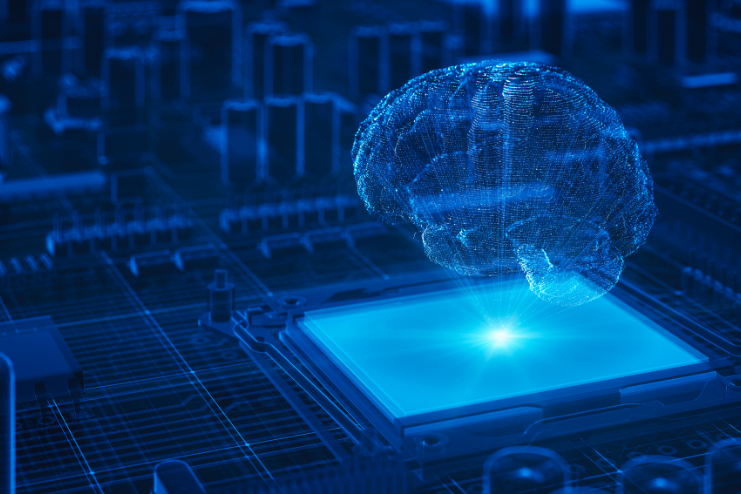In the rapidly evolving landscape of artificial intelligence (AI), understanding the intricacies of various approaches is crucial for businesses aiming to leverage these technologies effectively. Today, we embark on a brief exploration of Generative AI, foundation models, and traditional AI, dissecting their applications, strengths, and when to deploy them in industrial settings.
Traditional AI: Precision in Specificity
For years, traditional AI has been the cornerstone of many industrial applications, employed for its precision in executing specific tasks. Whether it’s process automation and optimisation, pricing strategies, predicting customer churn, or scoring risks, traditional AI delivers quantifiable outputs, often in the form of numbers or probabilities. Its structured nature makes it ideal for scenarios where precision and specificity are paramount, providing invaluable insights for decision-making processes across various sectors.
Generative AI: Pioneering Unstructured Content
In stark contrast, Generative AI represents a paradigm shift by venturing into the realm of unstructured content generation. This groundbreaking approach harnesses large models with hundreds of billions of parameters to create text, images, videos, or even code. Unlike traditional AI, which focuses on providing definitive answers, Generative AI thrives on generating novel content that didn’t exist before, from crafting textual summaries to generating compelling images or even recommending one credit card over another for a given set of criteria. However, evaluating the correctness of its output can pose challenges due to the absence of clear right or wrong answers.
Terms often referenced along with Generative AI include:
- Foundation models – a type of machine learning model that serves as the basis for a range of tasks
- Large language models (LLMs) – models that learn (are trained on) text
- Large vision language models (LVLMs) – models that can learn from both text and images.
Understanding Foundation Models
Generative AI encompasses a broader category of artificial intelligence techniques focused on creating new content, such as text, images, or ideas, that didn’t exist before. It includes various approaches, including Generative Adversarial Networks (GANs) and autoregressive models. Foundation models, on the other hand, are a specific type of generative AI that serves as the backbone for many AI applications. These models, often built with hundreds of billions of parameters, are pre-trained on vast amounts of data and can be fine-tuned for specific tasks. While generative AI explores the creation of new content, foundation models provide a powerful framework for achieving this goal by offering capabilities for natural language understanding and generation, image processing, and more. In essence, foundation models represent a subset of generative AI that provides a common foundation for developing sophisticated AI applications across various domains.
When to Use Foundation Models
Foundation models, as the backbone of Generative AI, offer a versatile and powerful toolset that can be leveraged across various industrial applications. Deciding when to deploy foundation models in production depends on several factors, including the nature of the problem at hand, the available data, computational resources, and the desired outcomes. Here are some scenarios where foundation models shine:
- Natural Language Understanding and Generation: Foundation models excel in tasks related to natural language understanding and generation. Whether it’s sentiment analysis, language translation, or text summarisation, foundation models can process and generate human-like text with remarkable accuracy. These capabilities make them invaluable for applications requiring interaction with textual data, such as customer support chatbots, content generation platforms, and language translation services.
- Content Creation and Personalisation: Businesses looking to enhance their content creation efforts or personalise user experiences can benefit from the capabilities of foundation models. These models can generate tailored content based on user preferences, historical data, and contextual information. Whether it’s generating product descriptions, crafting marketing copy, or recommending personalised content to users, foundation models can enhance engagement and drive conversions.
- Image and Video Processing: While foundation models are primarily associated with text generation, multimodal foundation models are trained on data across two or more modalities (e.g. text, images, video) and can be applied to tasks involving image and video processing. From generating realistic images to enhancing photo quality and video editing, foundation models offer a range of capabilities that can elevate visual content creation and manipulation. Industries such as e-commerce, entertainment, and digital marketing can leverage these capabilities to enhance visual storytelling and product presentation.
- Data Augmentation and Synthesis: Foundation models can augment or synthesize data for training machine learning models, especially in scenarios where labelled data is scarce or expensive to obtain. By generating synthetic data that mimic real-world scenarios, foundation models can improve the robustness and generalisation of machine learning models across various domains, including computer vision, natural language processing, and speech recognition.
- Scenario Simulation and Planning: Foundation models can simulate complex scenarios and generate hypothetical outcomes, making them valuable tools for strategic planning and decision-making. Industries such as finance, healthcare, and logistics can use foundation models to simulate market conditions, patient outcomes, supply chain disruptions, and other variables to assess risks, optimise strategies, and plan for contingencies.
Current Limitations of Foundation Models:
As exciting as the possibilities of this relatively new technology are, several limitations exist to the widespread use of foundation models.
Not Edge-ready
Foundation models usually cannot be deployed on the “edge,” as they require much more computing power than traditional models. If data can be sent to the cloud, the cloud platforms provide computing at extra cost. If data cannot be sent to the cloud (for reliability, privacy, latency, or other reasons) or cloud costs prove prohibitive, then specialized computational hardware must be deployed, maintained, and secured on-premise.
Not Real-time
They are not always applicable in real-time as each inference (response) typically takes 0.3 to 3 seconds, not including the latency from transferring the prompt and inference to and from the cloud.
Not functional “out-of-the-box”
They require highly skilled data scientists and engineers to troubleshoot, modify, fine-tune, or prompt-tune. This may not be intuitive when we see how easy it is to use applications such as ChatGPT; however, foundation models for specific business purposes don’t come “out-of-the-box” yet. One reason they don’t is that they do not always know up-to-date or domain-specific information and need to be provided with such information in specific ways.
Lack of Morals
Foundation models do not have a concept of “good” or “bad” like humans do, as their entire knowledge base comes from text and image databases, not real life. In other words, they do not have any life experience (including that of cause and consequence) and are not equipped to predict their output’s effects or consequences. Guardrails like censorship rules are imposed on foundation models by human developers to mitigate harm. A foundation model is a tool, like a car or a kitchen knife, and the responsibility for their safe use falls on the user.
Hallucinations
A lot – perhaps too much – has been said and written about the “hallucinations” or erroneous, nonsensical outputs that the foundation models produce occasionally. The important point to understand is that artificial neural networks – no matter how simple or how complex – simply generate their output given their input and their training data. The training data is neither perfectly memorised by the network nor guaranteed to be correct, unambiguous, non-self-referential, or non-self-contradictory. Relatively simple networks err in relatively simple ways. An email may be misclassified as spam or not spam, for example. Complex networks such as foundation models, LLMs, and LVLMs err in complex ways, for example, by producing output that is human-recognisable but erroneous or by failing to comply with user instructions. There are ways to mitigate this behaviour in many practical applications of the foundation models; however, again, this requires highly skilled data scientists and engineers.
The High Computational Requirements of Generative AI
It’s essential to recognise that the power of Generative AI comes with significant computational requirements. Training and running large generative models with hundreds of billions of parameters demand substantial computational resources, including high-performance GPUs and massive amounts of memory. These computational demands translate into increased costs and complexities, making Generative AI more resource-intensive than traditional AI approaches.
For example, when asked, “Can you give an example of the financial cost and environmental impact of running a simple prompt such as this one in ChatGPT 4.0?” ChatGPT returned a detailed calculation of the cost and environmental impact as follows:
The financial cost of running a prompt can be broken down into several factors:
- Hardware Costs: The GPUs used for inference (running the model) are typically very expensive. A high-end GPU like the NVIDIA A100, which is often used for AI tasks, can cost tens of thousands of dollars.
- Electricity Costs: GPUs consume a significant amount of electricity. The cost of electricity varies by location, so let’s use an average rate for this calculation.
- Cloud Services: If the model is hosted on cloud services like AWS, Google Cloud, or Azure, there are costs associated with using their computational resources.
Example Calculation
Let’s assume the following:
- The GPU being used is an NVIDIA A100.
- The cost of electricity is $0.12 per kWh.
- The inference cost per prompt on a cloud platform is approximately $0.01 to $0.03.
- NVIDIA A100 power consumption: ~400 watts (0.4 kW).
- Time to process a single prompt: ~2 seconds.
Electricity cost for one prompt:
Electricity cost=Power consumption×Time×Electricity rate, so
Electricity cost=0.4 kW×(3600 seconds/hour2 seconds )×0.12 dollars/kWh≈0.000027 dollars
Cloud cost for one prompt:
- Let’s take an average inference cost of $0.02 per prompt.
Total financial cost per prompt
Total cost=Electricity cost+Cloud services cost≈0.000027 dollars+0.02 dollars≈0.02 dollars
Environmental Impact
The environmental impact of processing the response to a prompt is primarily due to the carbon footprint associated with the electricity consumption of the data centres running these models.
Carbon Emissions:
Average carbon emissions per kWh: ~0.5 kg CO₂ (this can vary widely depending on the energy mix).
Carbon emissions for one prompt:
Carbon emissions=0.4 kW×(3600 seconds/hour2 seconds )×0.5 kg CO₂/kWh≈0.00011 kg CO₂ or 0.11 grams CO₂
- Financial Cost: Approximately $0.02 per prompt.
- Environmental Impact: Approximately 0.11 grams of CO₂ per prompt.
Given that ChatGPT says it receives 416,667 prompts per hour, that equates to over $8000 and 45.83 kg CO₂ pumped into the environment every hour. Multiply that by all the Generative AI applications being deployed, the financial and environmental costs are not insignificant. These calculations only examine inference or responses to prompts. Training the models
However, advancements in hardware and optimisation techniques are beginning to mitigate these challenges, making Generative AI more accessible to a broader range of applications.
(image)
Finding the Right Tool for the Job
Determining when and how to deploy various types of AI is essential in navigating the AI landscape. Traditional AI’s ability to deliver precise, quantifiable results makes it indispensable for decision-making processes in different sectors. It is ideal for tasks such as predictive analytics, which can accurately process historical data to forecast future trends. In industries like finance, traditional AI is invaluable for fraud detection and credit scoring, providing consistent and explainable results critical for regulatory compliance. It supports diagnostic tools in healthcare by analysing patient data to identify diseases, ensuring that results are both interpretable and trustworthy. Traditional AI also shines in operational settings such as supply chain management and logistics, where it enhances efficiency through well-defined algorithms. These applications benefit from traditional AI’s ability to handle large volumes of structured data, delivering precise and reliable outcomes.
On the other hand, Generative AI thrives in domains where creativity and unstructured content generation are paramount. Whether it’s crafting textual summaries, generating compelling images, or engaging in natural language interactions, Generative AI offers a plethora of possibilities for content creation and innovation. While evaluating its output may pose challenges, the potential for groundbreaking discoveries and novel solutions means it is a technology worth evaluating across various use cases.
Foundation models should be considered for production deployment when dealing with tasks related to natural language understanding and generation, content creation and personalisation, image and video processing, data augmentation and synthesis, and scenario simulation and planning. By leveraging foundation models’ capabilities, businesses can unlock new opportunities for innovation, efficiency, and growth in an increasingly AI-driven world.
Embracing Innovation: Coexistence and Collaboration
It’s clear that both Generative AI and traditional AI have their place in the industrial landscape. Rather than signalling the obsolescence of one approach in favour of the other, the emergence of Generative AI and foundation models expand our toolkit, offering diverse solutions to an ever-widening array of problems.
By understanding the strengths of each approach and leveraging them in tandem, businesses can unlock new possibilities and drive innovation forward. The key lies in solving the right problems with the right tools. Harnessing the power of AI to tackle complex challenges and drive business value will pave the way for a future defined by innovation and progress.
The AI landscape is vast and multifaceted, offering a myriad of tools and approaches to suit diverse needs. By embracing this diversity and leveraging the strengths of each, businesses can embark on a transformative journey towards a smarter, more efficient future.
At Aicadium, we specialise in AI for computer vision, delivering products that optimise productivity, inspection processes and quality control. Our turnkey solutions include state-of-the-art models, both Generative AI and traditional AI, that allow our customers to operationalise the best technology for their needs quickly. We guide companies from ideation to pilot, full deployment, and beyond to ensure we build and help maintain their AI investments.
Are you interested in seeing where AI could take your business? Contact us today to learn more.





